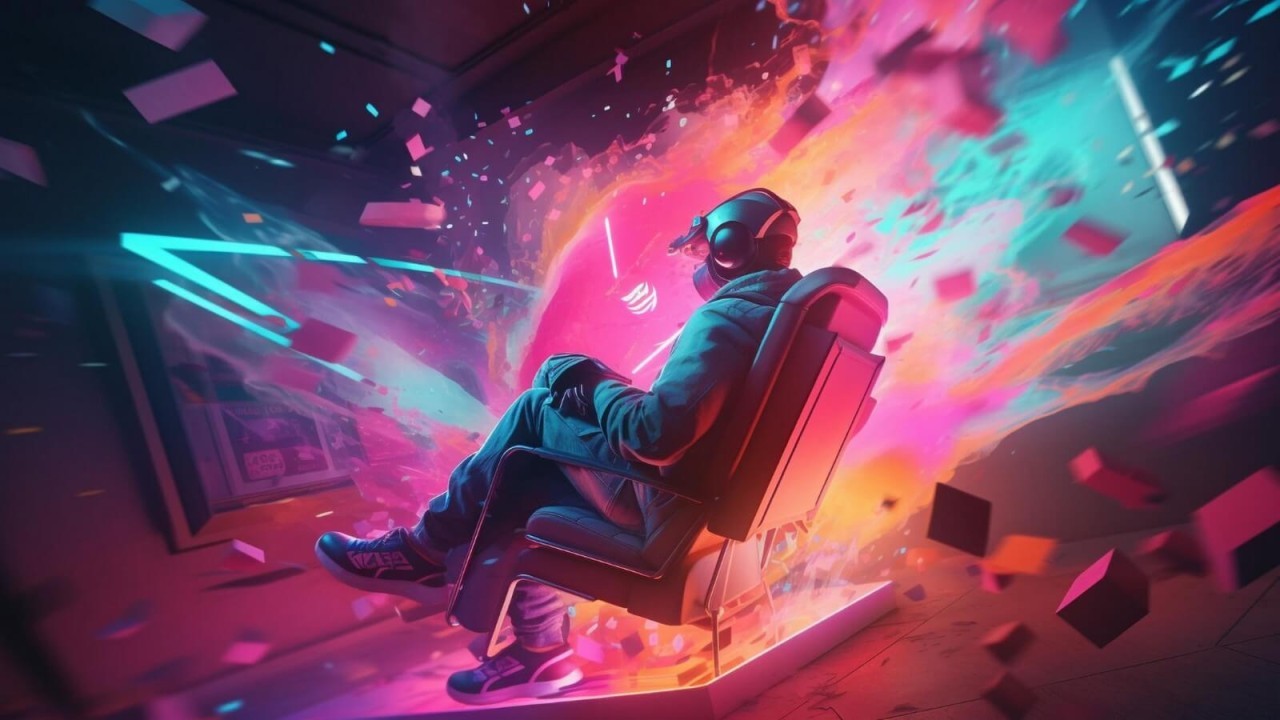The concept of the metaverse has rapidly transitioned from science fiction to a burgeoning reality, promising to reshape how we interact with digital environments. By blending augmented reality (AR), virtual reality (VR), and blockchain technology, the metaverse aims to create an immersive, interconnected virtual space where people can work, socialize, and play. This article explores the components of the metaverse, its current state, potential applications, and the challenges it faces as it continues to evolve.
1. Understanding the Metaverse: A New Dimension of Digital Interaction
At its core, the metaverse is an expansive digital universe where users can engage in various activities through virtual avatars. Unlike traditional digital platforms, the metaverse aims to offer a persistent, shared space that mirrors the real world but with limitless possibilities. This vision combines several technologies:
- Virtual Reality (VR): Immersive environments that users experience through VR headsets. These environments can replicate real-world scenarios or create entirely new worlds.
- Augmented Reality (AR): Technology that overlays digital information onto the physical world, enhancing real-world experiences with interactive elements.
- Blockchain Technology: Provides decentralized and secure transactions within the metaverse, enabling ownership of virtual assets and creating a robust economy.
2. Major Players and Platforms Shaping the Metaverse
Several tech giants and startups are pioneering the development of the metaverse. Notable players include:
- Meta (formerly Facebook): Under its new vision, Meta aims to create a comprehensive metaverse through its VR platform, Horizon Workrooms, and other initiatives that integrate social interactions and work environments.
- Microsoft: With products like Mesh and the integration of AR into its ecosystem, Microsoft is working to create a metaverse that enhances productivity and collaboration.
- Epic Games: Known for its popular game Fortnite, Epic Games is investing in creating a metaverse that extends beyond gaming, providing a platform for concerts, social gatherings, and more.
- Decentraland: A blockchain-based virtual world where users can buy, sell, and build on virtual land, Decentraland exemplifies the potential for a decentralized metaverse economy.
3. Applications and Use Cases: From Gaming to Commerce
The metaverse is poised to impact various sectors significantly:
- Gaming: Beyond traditional gaming experiences, the metaverse offers expansive virtual worlds where players can engage in complex interactions, socialize, and create content. Games like Roblox and Fortnite are early examples of metaverse-like experiences.
- Education: Virtual classrooms and immersive educational environments can transform learning experiences. The metaverse enables interactive simulations and collaborative learning opportunities that go beyond traditional methods.
- Remote Work: The metaverse has the potential to revolutionize remote work by creating virtual office spaces where teams can collaborate in real-time, attend meetings, and engage in team-building activities in a more immersive manner.
- Commerce and Branding: Businesses are exploring virtual storefronts and brand experiences within the metaverse. Virtual shopping experiences, branded virtual items, and digital real estate are becoming new avenues for commerce.
4. Ethical and Technical Challenges
Despite its promise, the metaverse faces several challenges:
- Privacy and Security: As users interact within the metaverse, they generate vast amounts of personal data. Ensuring that this data is protected and used responsibly is crucial.
- Interoperability: For the metaverse to achieve its full potential, different virtual worlds and platforms must be able to interact seamlessly. Standardizing protocols and ensuring compatibility across various platforms is a significant hurdle.
- Digital Divide: Access to the metaverse requires advanced technology and high-speed internet, potentially exacerbating existing digital divides. Addressing these disparities is essential to ensure equitable access.
- Content Moderation: Managing user-generated content and ensuring that virtual spaces are safe and respectful presents a significant challenge. Developing effective moderation tools and policies is vital to creating a positive user experience.
5. The Future of the Metaverse: Trends and Predictions
Looking forward, several trends are likely to shape the metaverse:
- Increased Integration: The lines between the physical and digital worlds will continue to blur, with more sophisticated AR and VR technologies creating seamless experiences.
- Decentralization: Blockchain and decentralized technologies will play a crucial role in ensuring that the metaverse remains open and user-governed, fostering innovation and user empowerment.
- Enhanced Realism: Advances in graphics and AI will lead to more realistic and interactive virtual environments, enhancing user engagement and immersion.
- Regulatory Developments: As the metaverse grows, regulatory frameworks will need to evolve to address new challenges related to privacy, security, and digital rights.
Conclusion
The metaverse represents a transformative leap in how we interact with digital environments, offering a vision of a connected, immersive virtual world where possibilities are limited only by imagination. As the technology continues to develop, it will likely bring profound changes to various aspects of life, from gaming and work to commerce and social interaction.
While challenges remain, the potential of the metaverse to reshape our digital experiences is immense. By staying informed and engaged with the latest advancements, we can better understand and navigate this evolving frontier, harnessing its potential to create a more interactive and interconnected digital future.



